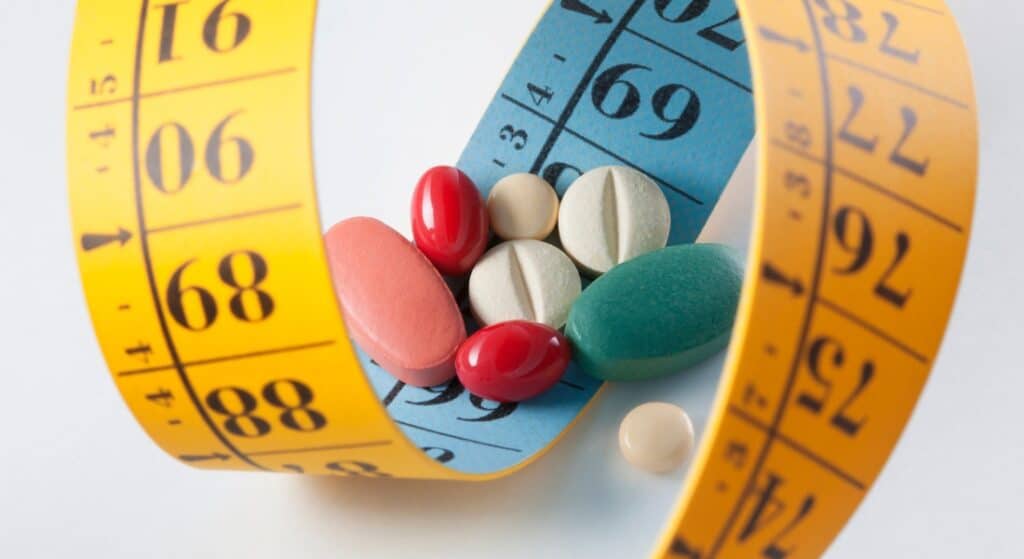For many of us, weight gain becomes the overriding obsession of middle age, but it’s the weight you lose in your 40s, 50s, and beyond that may jeopardize your health the most.
Many adults will lose muscle every decade after age 30 if they don’t stay active enough. It’s a condition common enough to have a name — sarcopenia — but you may know it better as a familiar colloquialism.
“If you don’t use it, you lose it,” says Mariah Burnell, DO, family medicine physician on the medical staff at Methodist Southlake Medical Center. “Around age 30, we all start to lose about 3% to 5% of our muscle mass every decade of our life.”
That loss of muscle, which can worsen after 60, represents a key contributor to disability in older adults, who become more prone to falls and more vulnerable to injury as they age.
Dr. Burnell sat down with a group from Methodist Generations to share her suggestions on how to lose weight while keeping muscle mass as we age. Her first word of advice: Consult your primary care doctor before starting a new diet or exercise program.

FOCUS ON PROTEIN
Eating a diet full of protein is important at any age, but it gets even more critical for older adults.
“As we age, protein should be the main focus with your macronutrients,” Dr. Burnell says. “Set a protein goal of 100 to 200 grams a day.”
If you eat protein with each meal or snack, most people can meet that goal without breaking a sweat (that part comes later). Consider that two eggs add up to about 10 grams of protein, a serving of Greek yogurt comes to 15 grams, and a chicken breast or a can of tuna is around 25 grams.
“Focus on whole foods rather than processed foods,” Dr. Burnell says. “Think about shopping the perimeter of the grocery store, then eat in this order: veggies low in starch, followed by protein and fat, and save carbohydrates for last.”
For patients who need more guidance, she recommends the DASH diet, developed to help reverse high blood pressure, or the Mediterranean diet, which emphasizes plant-based food and healthy fats.

STAYING ACTIVE
Maintaining muscle also requires exercise, of course: preferably a mix of cardio like walking or swimming and weight training.
“Physical activity is another piece of the puzzle,” Dr. Burnell says. “We recommend 150 minutes a week, and that can be split up however you want.”
Start with lower-intensity exercises, like stretching or chair calisthenics, to improve stability and balance. Then, you could graduate to a yoga class, walking on a treadmill a few times a week, or even push-ups.
“I’m not saying you have to get down on the floor and do 10 push-ups,” Dr. Burnell says. “Try wall push-ups or push-ups on your knees rather than your toes. It’s just a really great full-body exercise, regardless of how you can do it.”
Listen to your body when starting to exercise, and consult a doctor who knows you and your limitations.

LOSING WEIGHT AS WE AGE
It’s one thing to keep muscle mass and maintain a healthy weight, but it can be much more difficult to lose weight as we age. There are several reasons why that’s the case:
- Slowing metabolism: As we age, we become less active and lose muscle mass, as noted above. That changes how efficiently our bodies absorb and process nutrients. The good news is there are ways to boost metabolism even in middle age and beyond.
- Hormonal changes: Estrogen drops significantly for women entering menopause, and that in turn causes weight gain, especially around the midsection. Men suffer a more gradual decline in testosterone around age 40, making their bodies less efficient at burning calories.
- Work and life: By middle age, many people are at their busiest with careers and family life. That leaves less time for hitting the gym and possibly a shorter attention span for eating right.
It all adds up to a snowball effect of losing muscle and gaining fat, which combine to slam the brakes on metabolism. That explains why so many people are turning to medications to lose weight.
“It’s what everybody wants to talk about,” Dr. Burnell says. “You’ve been trying everything. You’re doing the diet stuff, you’re doing the exercise, and you’re just having a heck of a time trying to lose weight.”

PILLS VS. INJECTABLES
The older options are typically medications that quiet “food noise,” the cravings that lead so many people to gain weight. These pills include antidepressants like bupropion, diabetes drugs like metformin, and appetite suppressants like phentermine.
“Phentermine is not a good option for patients who have a lot of heart issues,” Dr. Burnell says, “so I don’t like to prescribe it for my older patients. Plus, it’s only approved to be used for three months, after which it’s off-label, and insurers don’t like that.”
Relatively new options like semaglutide (think Ozempic and Wegovy) are giving appetite suppressants a run for their money. These drugs slow down the digestive process, specifically delaying how quickly the stomach empties.
“They kind of force you to eat less because you’re full,” Dr. Burnell says. “It’s like built-in appetite suppression.”
But the potential problem with those injectable medications is they’re so new that there’s limited data on what happens when patients stop taking them.
“The jury is still out,” Dr. Burnell says. “But we’re starting to see patients gain their weight back as soon as they stop taking the medications.”
That’s why staying active and eating a healthy diet remain the best options for losing the fat we don’t want and keeping the muscle we do — because losing weight may be the single best way to ward off other health problems as we age.
“Studies have shown that losing 7% of body weight can significantly improve blood pressure, blood sugar control, and cholesterol,” Dr. Burnell says. “That all contributed to a lower risk of diabetes, heart attack, and stroke.”






